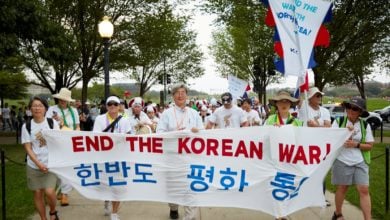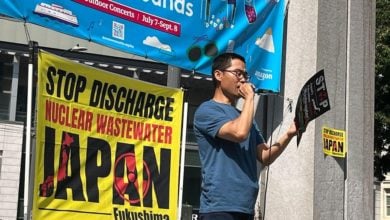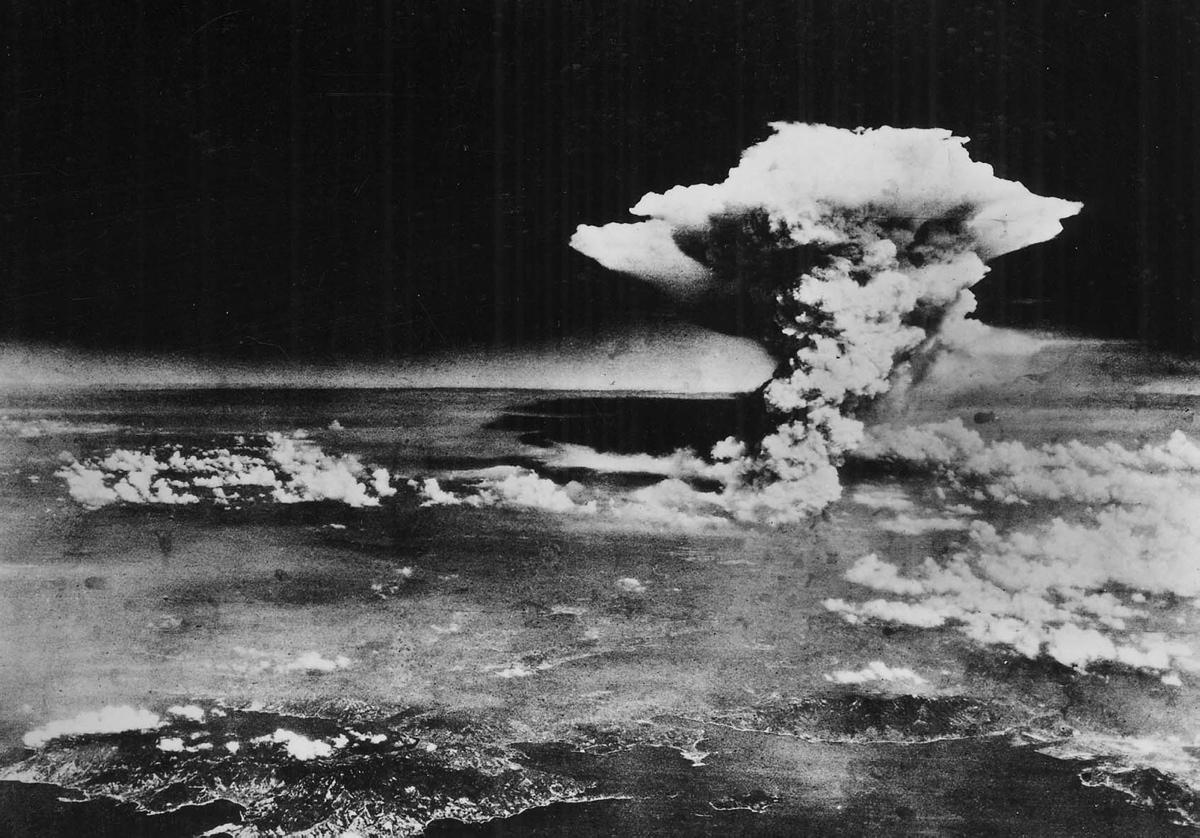September 8 marks the 64th anniversary of U.S. military occupation of the Republic of Korea (South Korea). While all of Korea was subjugated to brutal colonization by Japanese imperialist forces for nearly half a century, for the people of South Korea, the end of Japanese colonialism in 1945 was immediately followed by U.S. military occupation, which continues today.
|
|
From 1910 to 1945, Korea was an official colony of Japan. At the end of World War II, following the U.S. nuclear bombings of Hiroshima and Nagasaki on Aug. 6 and 9, 1945, and the Soviet invasion of Manchuria on Aug. 9, Japanese Emperor Hirohito announced the surrender of Japan in a national radio address on Aug. 15.
Five days prior to Hirohito’s radio address, Korea was hastily divided at the 38th parallel by two young U.S. military officers using a small National Geographic map. The postwar administration of the North would be governed by the USSR, while the South came under U.S. military control.
Despite the rhetoric of “liberating Korea,” U.S. interests in the Korean Peninsula have always been imperialist in nature as a result of Korea’s geopolitically strategic location. Although slightly larger than the state of Nebraska, the Korean Peninsula borders China to the northwest and Russia to the northeast, and is separated from Japan to the east by the Korea Strait.
United States supported Japanese colonization
Japanese colonization of Korea was one of the cruelest colonial projects in history. Yet, it had U.S. support from the start. In 1905, Japan signed the Taft-Katsura Agreement with the United States, which stipulated Japanese control of Korea in return for recognition of U.S. dominance in the Philippines. A few months later, the Treaty of Portsmouth was drafted with help from the U.S. government recognizing that “Japan possesses in Korea paramount political, military and economical interests.”
Later that year, Korea became a protectorate of Japan, and was officially annexed in 1910. The currency was converted to the Japanese yen, and all major industries were taken over. Traditional Korean practices were outlawed. Japan even forbade use the Korean alphabet hangul as “subversive activity.”
Japanese colonizers claimed that colonization was for the sake of the Korean people. The Japanese-controlled Korean press printed: “Japan is in this country with the object of promoting happiness of the masses. … She must be prepared to sacrifice anybody who offers obstacles to her work. … There is but one way to deal with these people, and this by stern and relentless methods.”
Farmlands were seized by the colonial government, and the Korean people were driven into poverty and famine. At one point, half of the population was starving. Hundreds of thousands of Koreans were shipped to Japan to provide slave labor, and by 1940, another million had moved to Japan to find work.
In 1912, the colonial government passed the Flogging Ordinance, in which punishment of minor “crimes” could be carried out by flogging. By 1916, 47 percent of all “offenders” were flogged. The colonial government claimed that this violent and humiliating policy was necessary because Koreans “lack[ed] any sense of shame and capacity for reasonable thinking” and “would not feel any pain from imprisonment.”
During World War II, the Japanese Imperial Army coerced and kidnapped an estimated 200,000 Korean women into the Chongsindae, or “voluntarily offered body corps” in which they were transported to the front lines to be prostitutes and provide slave labor for Japanese soldiers. These “comfort women” were considered gifts from the Japanese Emperor to the troops.
Had U.S. interests in Korea at the end of World War II been truly about liberating the Korean people, wouldn’t the U.S. government order the defeated Japanese forces—so feared and despised by the Korean people—out of Korea immediately upon surrender?
Japanese colonial forces ordered to stay in South
Whereas the Soviet Army established the Soviet Civil Authority to temporarily govern the North, as soon as Japanese surrender became imminent, the U.S. military ordered Japanese colonial forces to stay in the South. It was not for nearly another month until the U.S. Army landed in Korea on Sept. 8, 1945, and established a military government shortly thereafter that Japanese troops began to leave the country.
Many historians argue that U.S. military occupation following World War II was more hostile and brutal than the Japanese colonial government. In fact from 1945 to 1948, the U.S. military continued to employ Japanese colonists, and Japanese law remained in effect. The prostitution of Korean women was official government policy for the purpose of now entertaining U.S. soldiers.
Meanwhile, in North Korea, the Soviet Civil Authority supported the peasant organizations and workers’ councils. In March 1946, land reform was instituted in which land owned by Japanese colonizers and their Korean collaborators was divided and handed over to poor formers. The rule of the land-owning class was broken, and landlords were allowed to keep only the same amount of land as their former tenants. Soviet forces left the peninsula in 1948.
U.S. occupation troops remain in South Korea to this day. Washington continues to falsely claim that North Korea is to blame for the continued division of Korea. However, U.S. imperialism and the 32,000 U.S. troops that are stationed in South Korea to enforce the border between the North and South remain the predominant obstacle to reunification of the Korean Peninsula. After all, U.S. imperialism, from the beginning of Japanese colonization to today, has never had the interests of the Korean people in mind.





